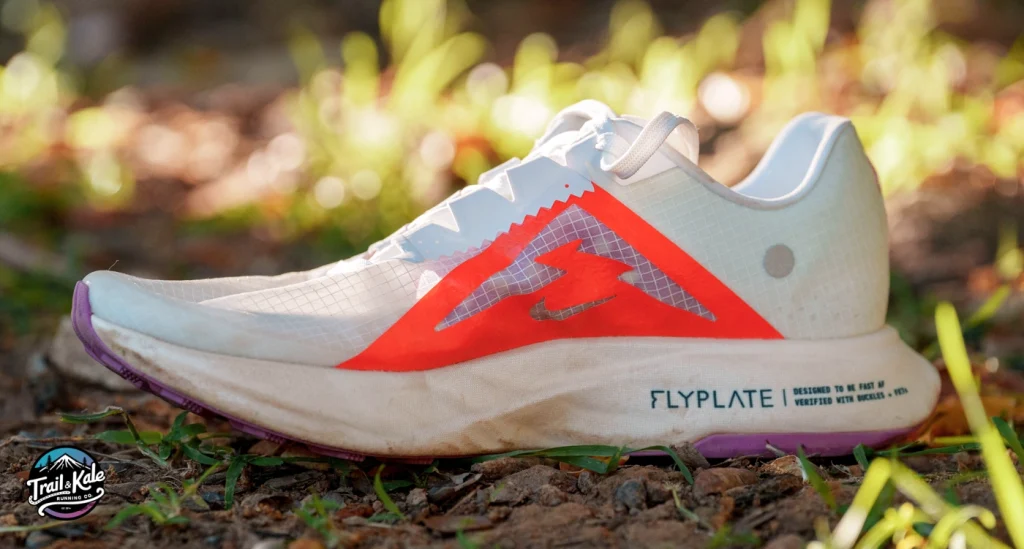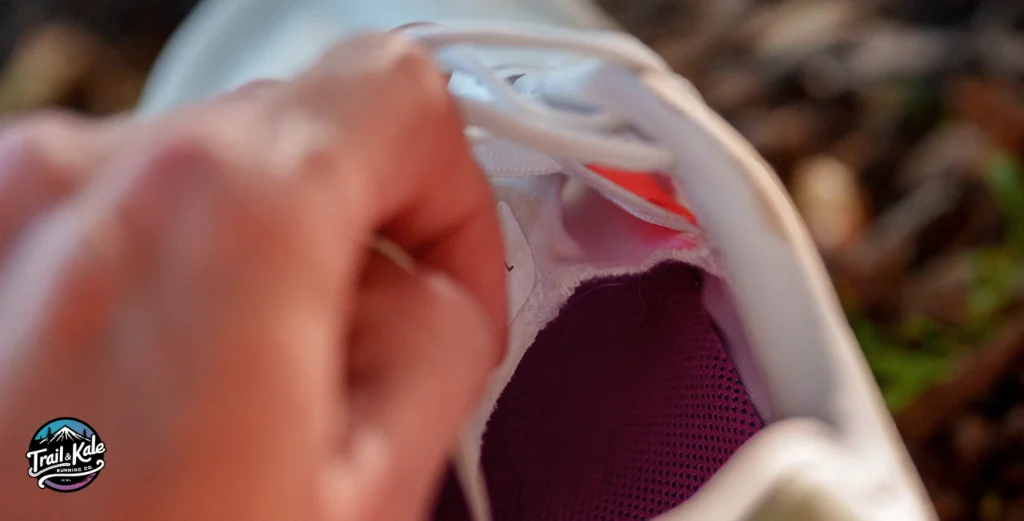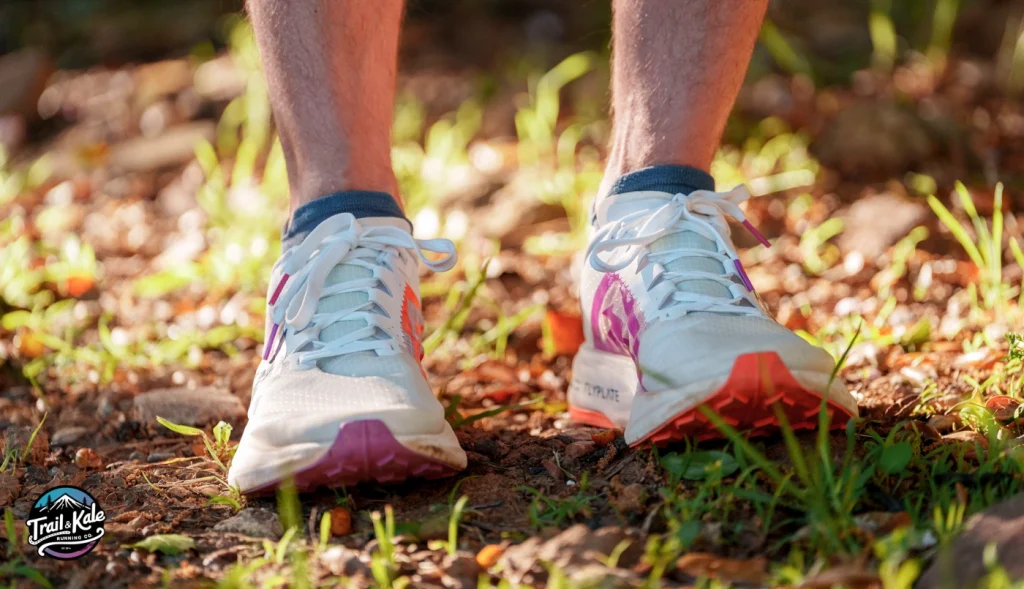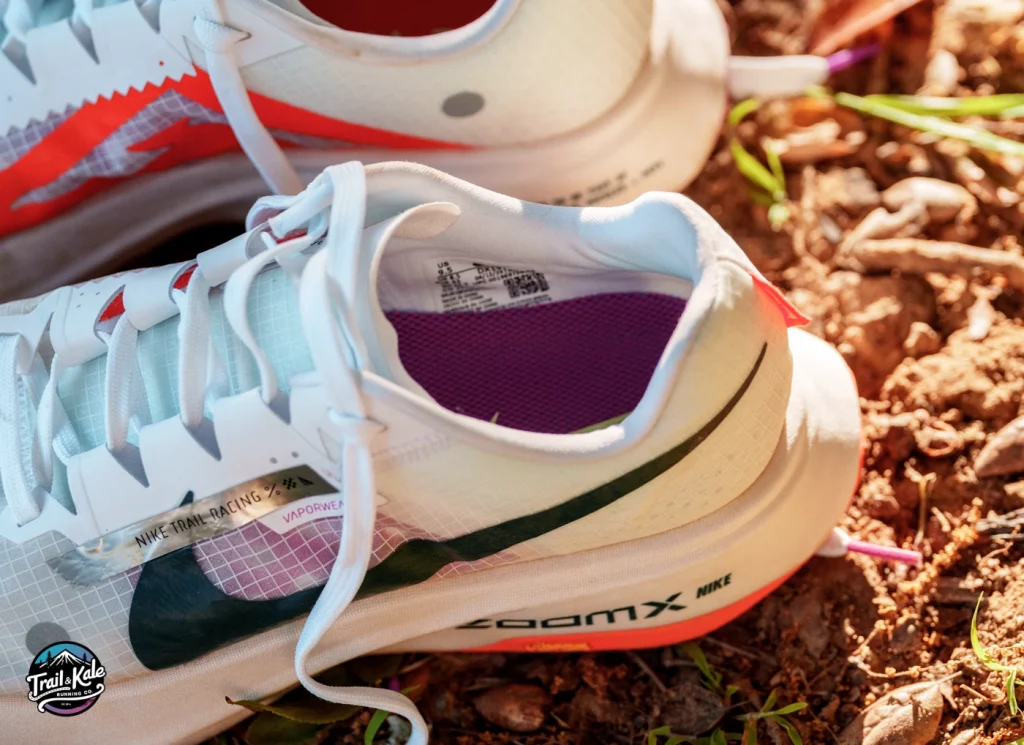This Nike Ultrafly review is going to hopefully answer any questions you may have before buying them, whether they’ll be well suited to you and the trails you run, and ultimately whether they’re worth that heavy price tag often associated with a carbon plated race day shoe.
I have been testing out the Nike Ultrafly on a mix of steep climbs, and descents, on technical and non-technical terrain and I now have a really good understanding of where they perform the best, and where they need improvement ready for the next version – all of which you can also see in my video review here.
The Nike Ultrafly is clearly engineered for speed, so I wanted to see how they would handle real mountain trails as well. They feature top of the line Nike technologies like ZoomX foam, a Vaporweave mesh upper, and wait for it, a Vibram MegaGrip outsole! Woohoo! But the real question for me is: how well does all this mesh together, and do they perform on the trail?
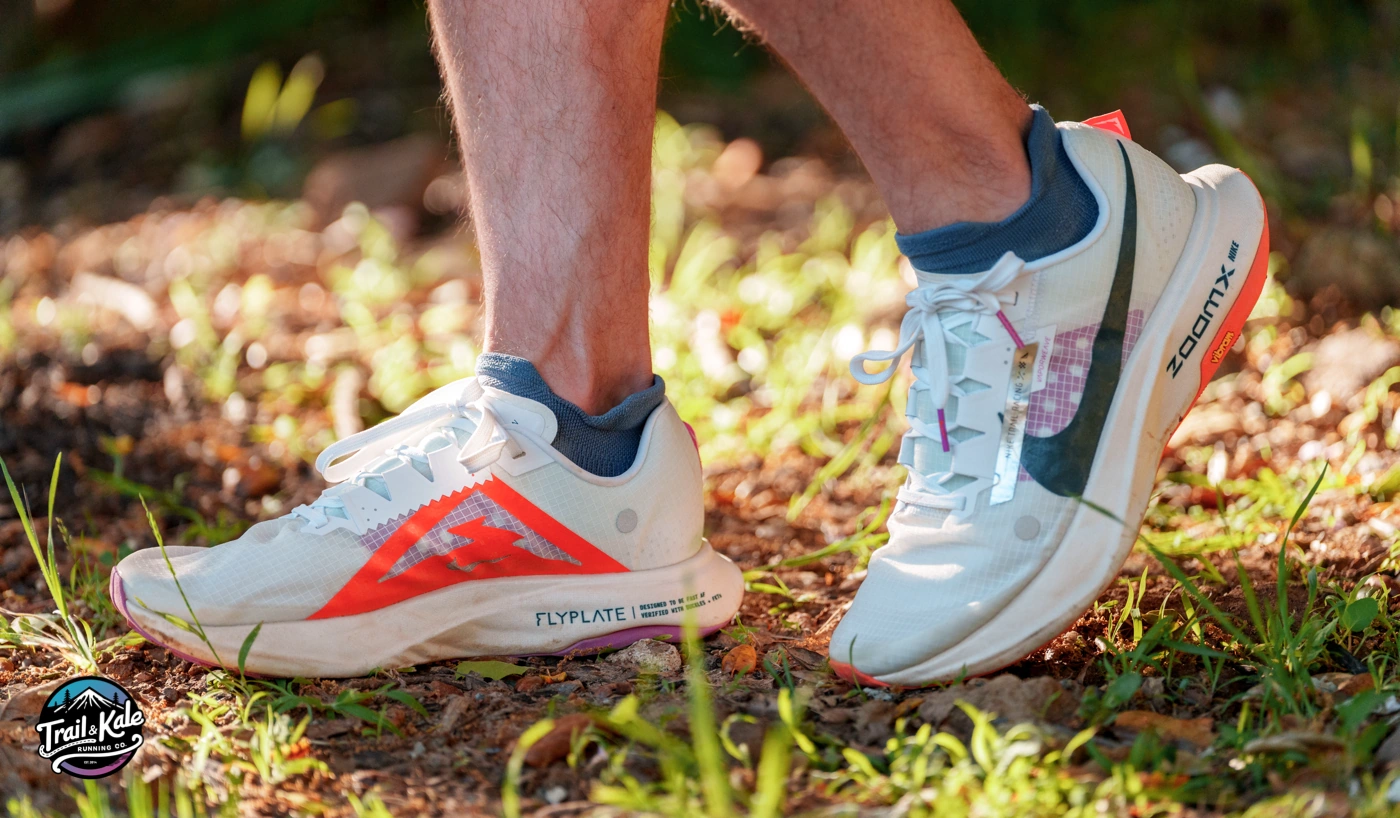
Without further ado, it’s time to see how the Nike Ultrafly stands up to the hype and if it’s the right investment for your running needs, and don’t forget to drop your thoughts and experiences in the comments below!
The Key Specifications
- Price: $260 at nike.com
- Sizing and fit: True to size in length. They have a wide fit and are very roomy inside.
- Weight: 10.5oz (298g) for a size US(M)9 (my pair).
- Drop: 8.5mm
- Toe box width: Wide.
- Stability: Neutral, so there’s no additional stability or support however a wide footprint and carbon fiber plate makes them feel stable.
- Upper: Vaporweave mesh upper
- Midsole Cushioning: Carbon fiber flyplate sandwiched between ZoomX foam and a fabric wrapped midsole.
- Outsole: Vibram Megagrip
- Best for: All distances, especially ultra running, and mild to challenging terrain with rolling hills (not big mountain steep climbs)
👋🏼 If this is your first time on Trail & Kale, welcome! This site (and our YouTube channel) are designed to help you run your best, through our training plans, 101 run tips, and insightful, honest running shoe reviews, just like this one. Subscribe to our Newsletter to get full access to our Training Plans, and to stay up to date with all the latest running gear reviews.
Nike Ultrafly performance review
Alright, let me just start by saying how awesome this trail running shoes look, I mean you know you’re in for a treat even before doing any running in them.
On moderate inclines of around 10-15% gradient, the carbon fiber plate and ZoomX foam midsole does a great job of propelling you up the climb. You can maintain a pace that counters the stiffness of the plate, and with Vibram’s MegaGrip on the outsole, traction is best in class. This leads me to believe that the Ultrafly is ideally suited for races with rolling hills and trails that don’t feature prolonged, super steep climbs.
Moving on to how the Nike Ultrafly tackles steep climbs then. My experience here has been somewhat disappointing for a couple of reasons. First off, the heel lock doesn’t quite secure as well as I had hoped – It seems the design of the upper is the issue here.
The shoe’s heel just doesn’t snugly lock into place, which is most noticeable when climbing steep inclines due to the stiff carbon fiber Flyplate inside the midsole. This plate, while designed to store and release energy for fast, efficient runs on flat or gently rolling terrains, complicates things on steeper inclines. The stiffness of the plate can make the already weak heel lock that bit worse.
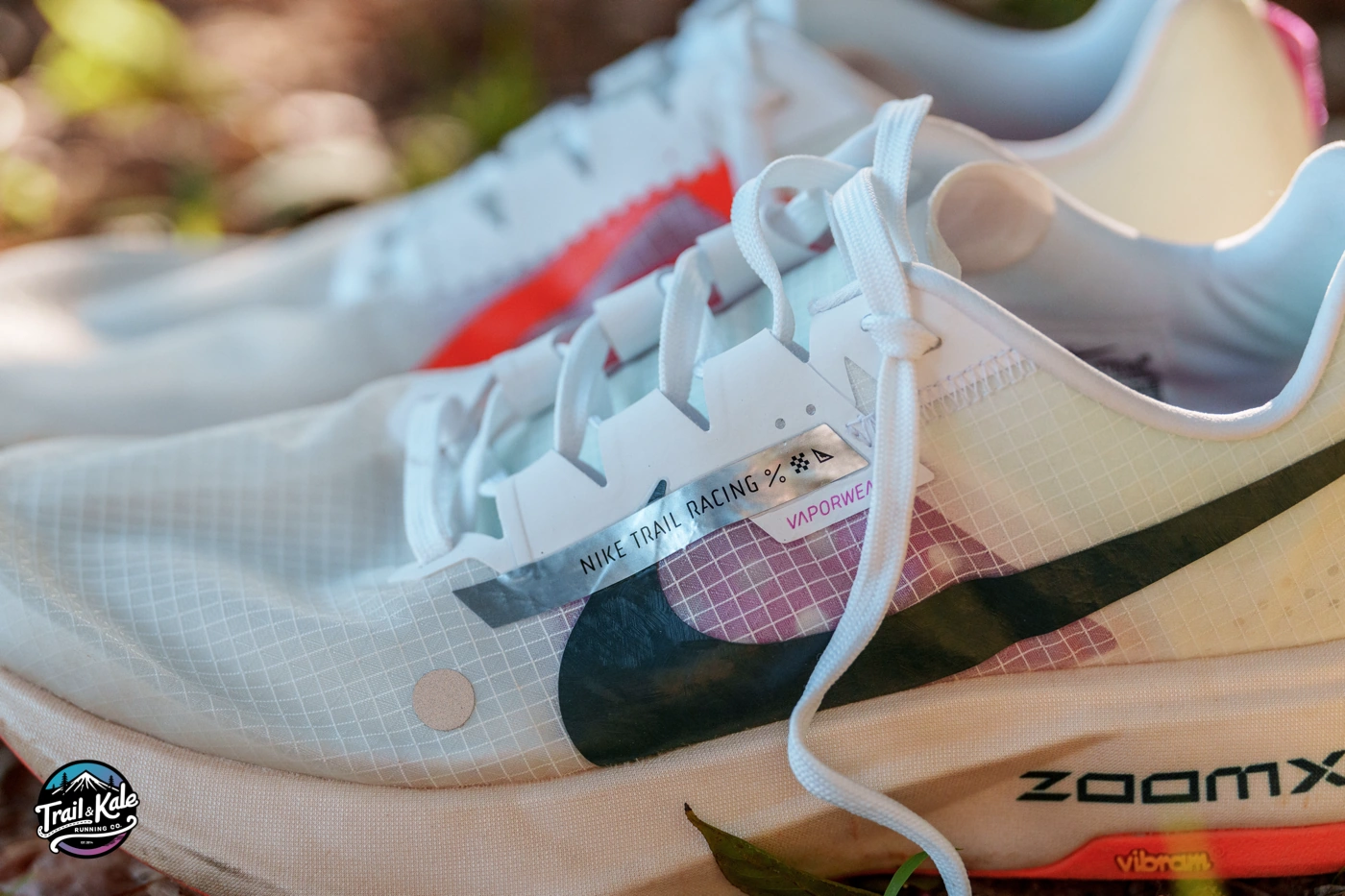
To address this, I experimented by using the Racer’s Loop Heel Lock lacing method to see if it helped improve the fit. There’s a noticeable difference with the Racer’s Loop, offering a tighter heel lock, though slippage still occurs.
The shoe’s tongue, has a few issues for me too, as it lacks any mechanism to secure it in place. Without a loop to thread the laces through, the tongue tends to slide down, further complicating the fit – especially so when using the Racer’s Loop lacing method, as the laces end up on the top of your foot rather than the tongue when it slips.
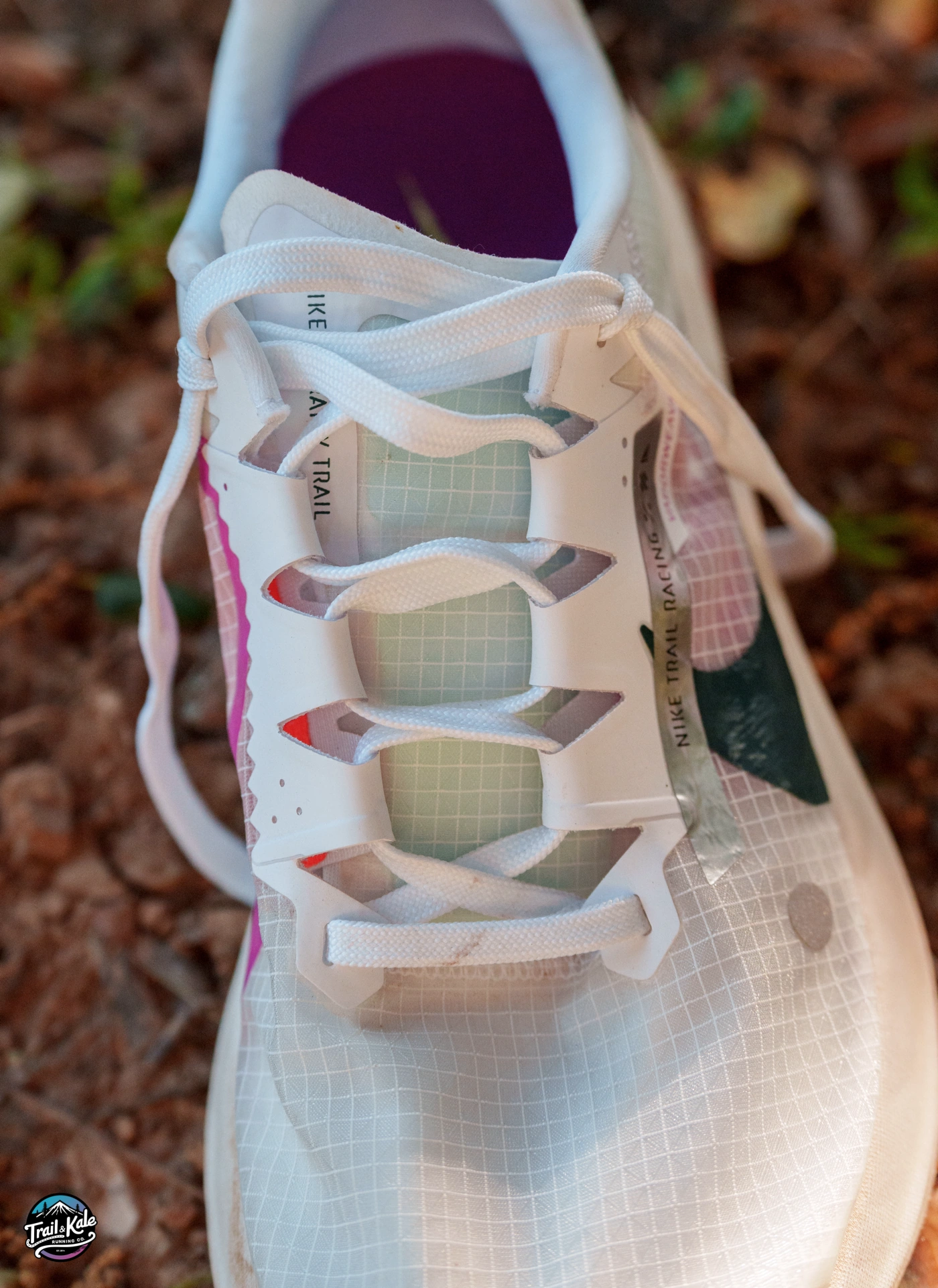
I also found that the laces, eyelets and eyestay are way bulkier than they should be for a $260 racing shoe, possibly adding unnecessary weight to the shoe, which suggests that the lacing system could benefit from a redesign in the next iteration, the Ultrafly 2.
Having tested them extensively on flat terrains and various climbs, the shoes excel on flatter sections – I was able to get some Strava medals on some of my regular segments without really pushing myself – that’s a testament to how well tuned they are for running fast on flat sections and downhill trails. Oh by the way, if you’re on Strava – make sure you join our Strava Club! 🙂
It’s on the flats and downhills where these carbon fiber plated racing shoes shine, propelling you forward swiftly and efficiently oven any distance.
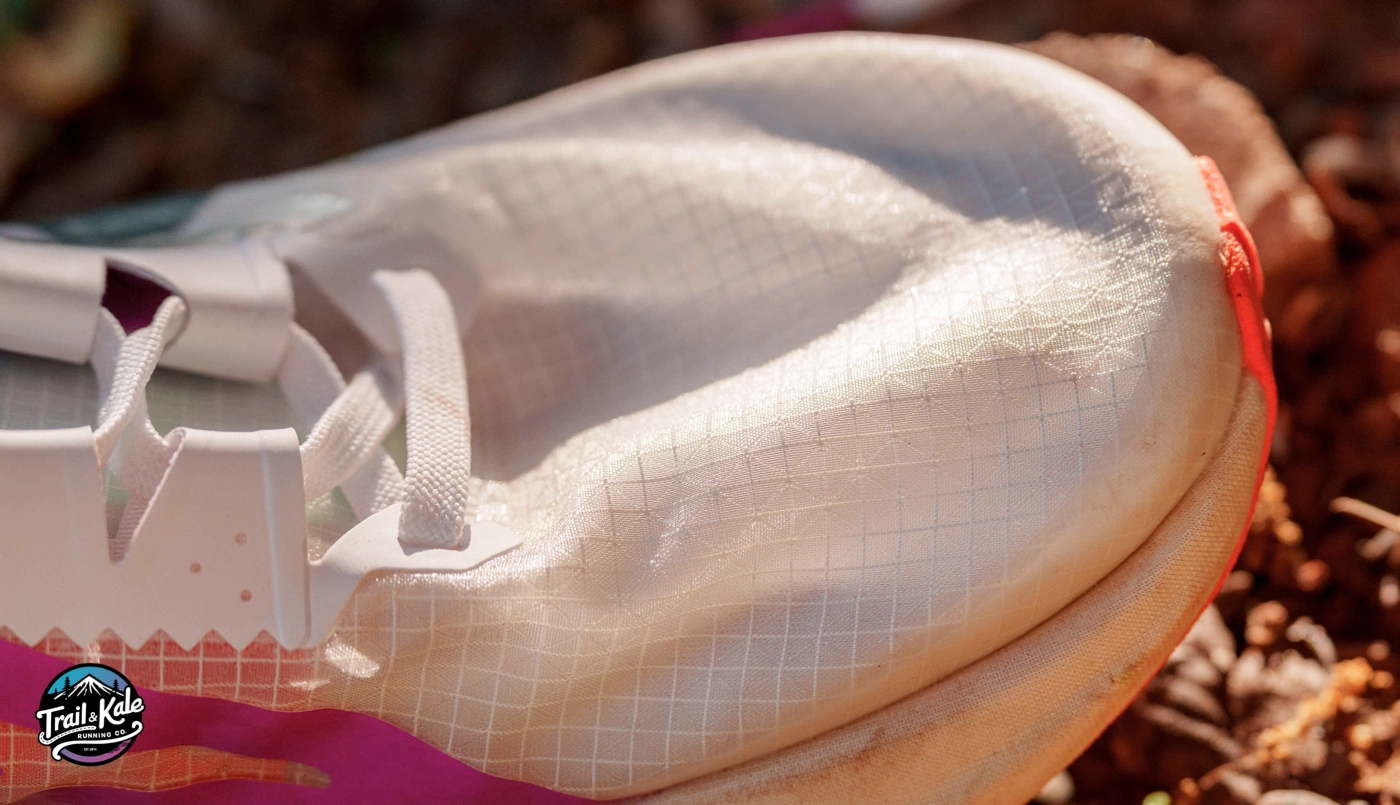
The Vaporweave mesh upper keeps your feet cool and comfortable, even during intense, high-speed runs which is what you’ll be wanting to do in these shoes. They also happen to have great stability which is especially noticeable in muddy or sandy sections where the broad footprint of the Ultrafly prevents sinking, thanks to plenty of surface area for better traction.
On downhills where terrain that’s not overly technical, the Nike Ultrafly really shines. This is largely due to their wide footprint and stability, which I mentioned before but also the ZoomX foam is just awesome at gliding over trails.
However, when you’re facing high-frequency terrain like dense rock fields or other scenarios where precise foot placements are required, in big mountain trail races for example, the Ultrafly’s broader build might not offer the exacting precision needed.
The Ultrafly is fantastic for long-distance events with rolling hills, like ultramarathons up to 50 miles where the trails aren’t crazy steep or intricately technical. They might not be the best choice for the rugged terrain of the Pyrenees or French Alps, however.

The Vibram Megagrip outsole excels on downhills, a component brand feature I’ve come to rely on through extensive testing of various trail running shoes over the years. Despite the lugs not being particularly deep—I’d estimate about 4 mm—they have an aggressive chevron pattern that grips really well, enhancing traction not only on the uphills but also providing substantial hold on descents thanks to the reverse direction of the chevrons at the heel region.
This design ensures that the shoes maintain excellent contact with the trail, offering stability and confidence across diverse terrain types.
➡ If you’re enjoying this review do me a favor, drop a comment down below, and don’t forget to subscribe to our newsletter for more running shoe reviews just like this one. If you’re familiar with these running shoes, share your thoughts on them in the comments.
Is the Nike Ultrafly worth buying?
It’s time to tackle the big question that’s likely on your mind and certainly on mine before I laced up these shoes: are they worth the hefty $260 price tag? Well… for me it’s a ‘no’; they just don’t quite hit the mark of a $260 shoe.
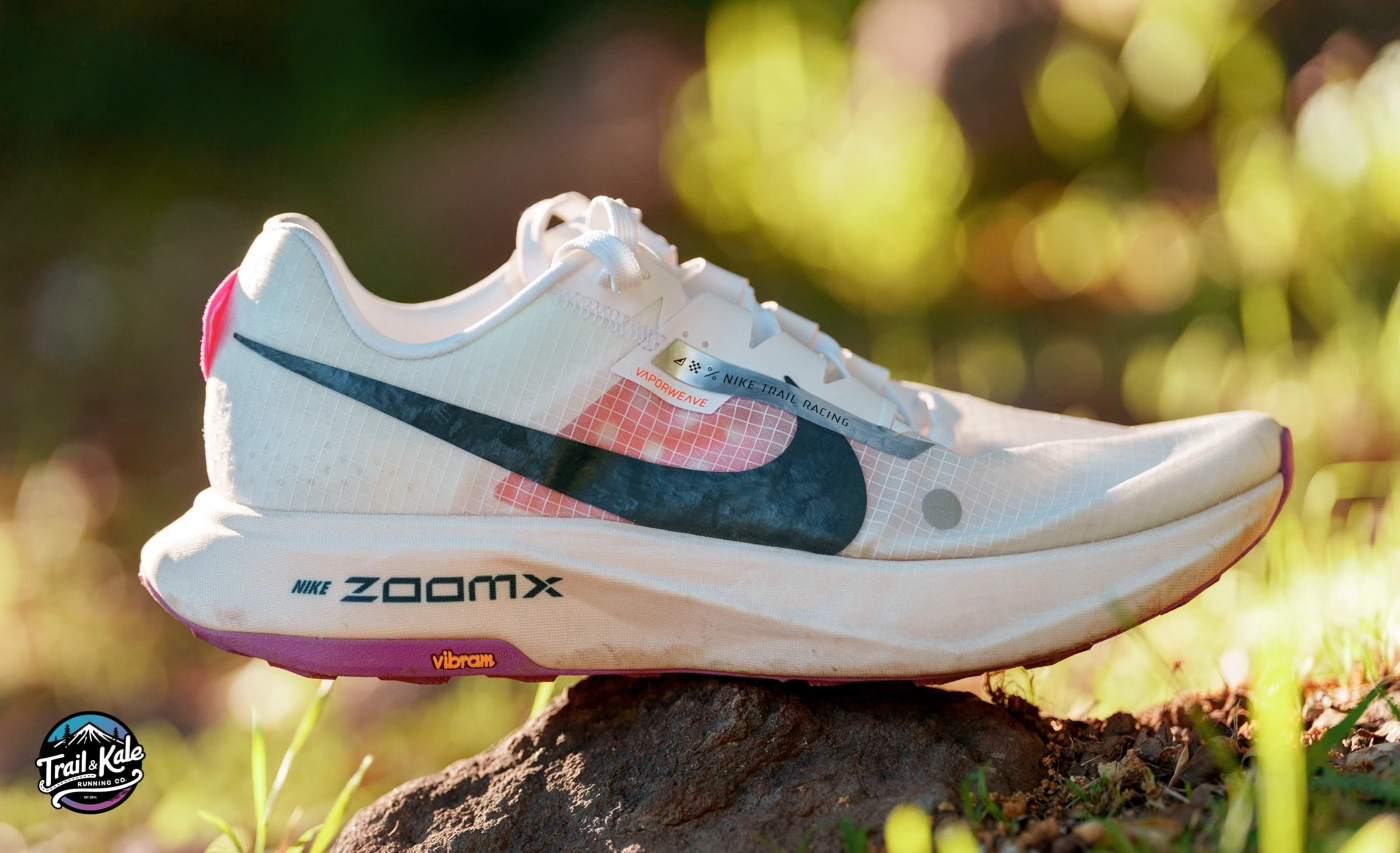
While they are packed with all the latest Nike technologies, including a Vaporweave mesh upper, ZoomX foam, Vibram Megagrip outsole , and a Flyplate carbon fiber plate – it seems they’re just a little too heavy, and these elements don’t fully mesh together as I feel they should for a premium race day trail shoe.
However, I remain optimistic about the future of the Ultrafly series. It appears there are straightforward fixes that could potentially make the next version a substantial improvement.
If Nike addresses the issues I’ve encountered, the next iteration could be epic. I’m genuinely fond of this trail racing shoe as it is, but I’m also excited by its potential. I’m keen to see what Nike will introduce later this summer, and you can be sure I’ll share my thoughts in a detailed review once I test out the upcoming model.
That said, for runners who frequently tackle the kind of terrain I described earlier; rolling hills, long-distance races, or fast-paced events without severe climbs – then these shoes might still justify their price. I highly recommend trying them out if you find that these conditions match your usual routes and races.
➡ If you’ve already run in the Ultrafly, I’d love to hear your take on them – share your experiences and opinions in the comments below; let me know how they’ve worked out for you.
For those of you on the hunt for the ideal trail running shoes tailored to your needs, I recommend heading over to my comprehensive roundup of the best trail running shoes, which is a buyer’s guide that will help you find the best trail running shoes for you.
I really hope you found this review informative and enjoyable – If you did, subscribe to our Newsletter, so you don’t miss our other in-depth running shoe reviews as they drop.
Nike Ultrafly Review [VIDEO]
Did you know we also create video reviews on our YouTube Channel? Click the image below to watch our Nike Ultrafly video review on YouTube next.
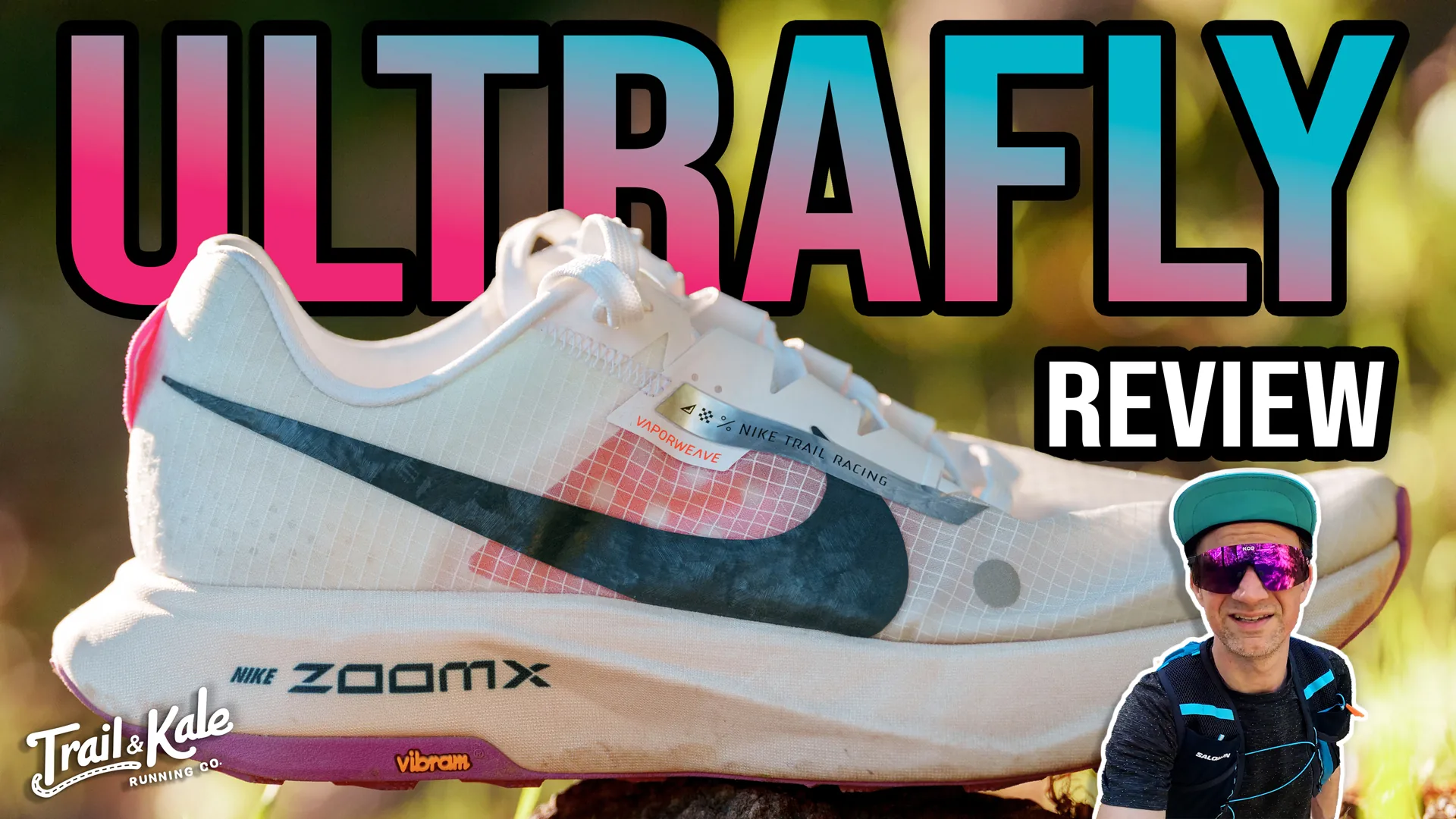
More photos of the Nike Ultrafly
